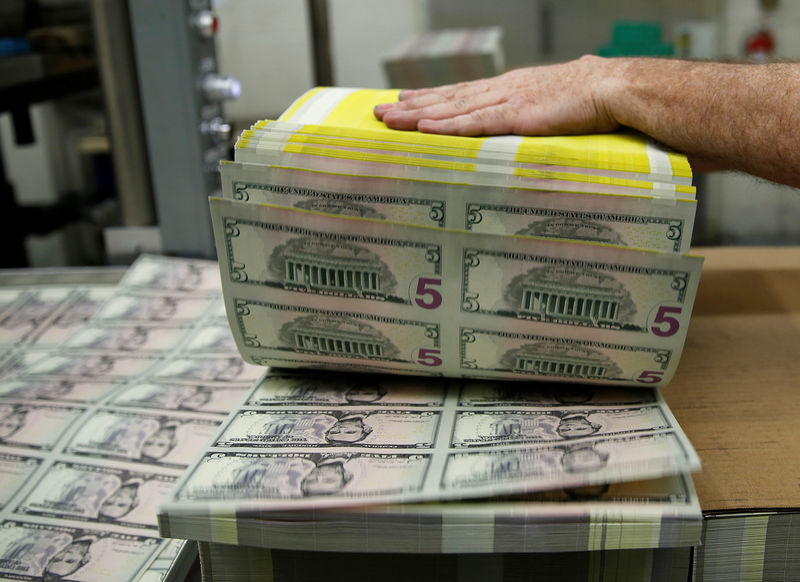By Peter Nurse
Investing.com - The U.S. dollar was hit hard Monday by aggressive moves from the Federal Reserve overnight to try and buttress the U.S economy, as the coronavirus disrupts global activity ever more deeply.
At 02:55 ET (0755 GMT), EUR/USD traded at 1.1166, up 0.6%. The U.S. Dollar Index, which tracks the greenback against a basket of six other currencies, stood at 98.177, down 0.7%. USD/JPY fell 1.3% to 106.56, after the Bank of Japan kept interest rates unchanged but increased its asset purchases, while GBP/USD traded at 1.2329, up 0.4%.
The global spread of coronavirus has roiled markets in recent weeks, causing volatility to spike and spurring a flight to haven assets. The U.S. dollar has been one of the main beneficiaries of this move, helped by relatively high interest rates and a growing economy.
However, the Federal Reserve slashed interest rates to near zero late on Sunday and announced massive bond buying, adding to the growing cavalcade of stimulus provided by central banks and governments around the world.
“This action in itself is not going to rescue the US economy from recession, but it will help to mitigate the risks from financial tensions that could make the growth and jobs outlook far, far worse,” said James Knightly, Chief International Economist at ING.
“The supply crunch in manufacturing, the panic in the financial sector and the collapse in airline travel, hotel stays and leisure activities means we could see a quarterly contraction of the scale reached during the height of the financial crisis, especially with the prospect of some city lockdowns."
Knighltly said ING now expects an annualized drop of U.S. 8% in GDP in the second quarter. That compares with drops of 8.4% and 4.4% in the final quarter of 2008 and first quarter of 2009.
Helping the weak tone Monday is a research note by Morgan Stanley (NYSE:MS), recommending selling the greenback, which was published before the Fed’s latest action.
“We expect further U.S. dollar weakness, driven by the interrelated combination of aggressive Fed stimulus and a tactical risk rebound,” they said. “The U.S. Dollar Index may reach, if not breach, the 95 level.”
The strategists recommend buying the euro versus the dollar with a target of 1.16 and a “fairly wide stop” at 1.08 given the high market volatility.
“Markets have moved a lot in the past couple of weeks, with the recent 20%-plus drawdown in global equities one of the most aggressive on record,” the strategists said. “Looking across asset classes, the cost-benefit of risk taking is increasingly moving in a positive direction.”
The dollar still benefited from safe haven inflows out of emerging market currencies, rising over 1% against the Mexican peso and Indonesian rupiah, over 2% against the Russian ruble, and 7.3% against the Kazakh tenge.
The dollar was broadly unchanged against the Chinese yuan at 7.00.
